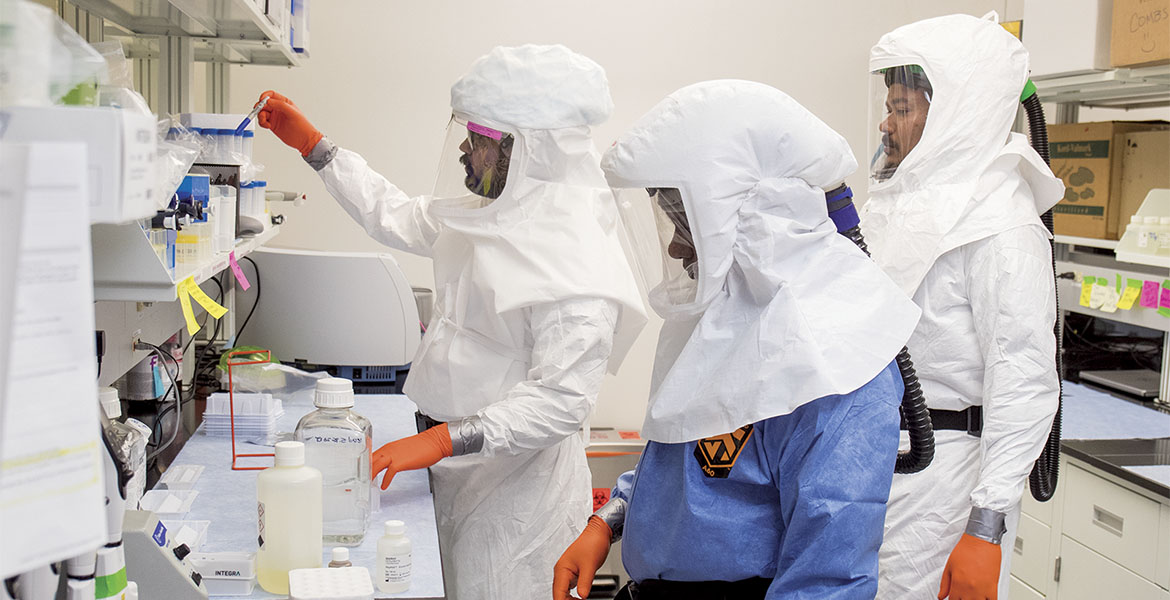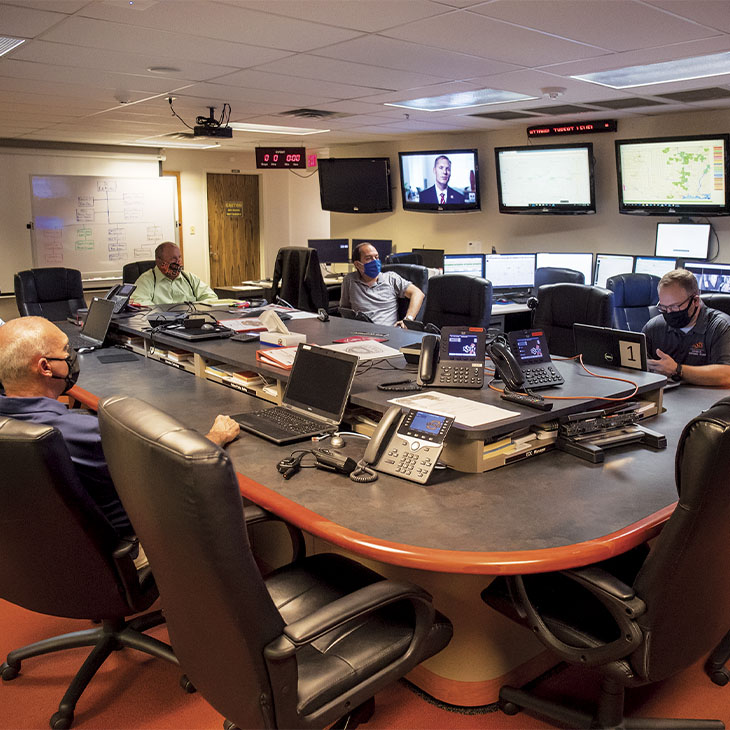
Volunteers provide the backbone for Oklahoma State's viral testing
Thursday, September 3, 2020
While the partnership between OSU Medicine in Tulsa and the OSU Diagnostic Laboratory on the Stillwater campus made COVID-19 testing possible, it was volunteers who paved OSU’s pathway into the fray.
“Oklahoma State University’s ability to support the state’s COVID-19 testing efforts was made possible thanks to the eager volunteers who stepped forward in a critical time of need,” said OSU President Burns Hargis. “We applaud the many volunteers for their long hours and hard work to serve their fellow Oklahomans. They represent the best of what OSU’s land-grant mission of service is all about.”
Dr. Kenneth Sewell, vice president for research, knew additional personnel would be needed to meet the testing demand. On March 27, his office sent out a campuswide survey seeking individuals who were interested in working in the lab. In less than two hours, more than 150 people replied, the majority with lab experience.
“I’m also thankful for all those who were willing to help even if we haven’t had a need for their particular skill set,” Sewell said. It has been really inspiring to see so many people who believed they could help in some way saying, ‘Please use me.’”
Dr. Darren Hagen, an assistant professor in animal genomics, volunteered to work in the lab. When he’s not teaching his class of 160 students, he’s going to the university daily to keep his research going.
The father of three forgoes time with his family to work in the lab four nights a week, doing intake, unwrapping and logging samples when they arrive. He’s the team leader on Sundays and Mondays.
“It’s interesting because rank goes out the door,” he said. “The philosophy becomes, ‘Let’s get this done.’”
For Hagen, the real heroes are the staff at the Oklahoma Animal Disease Diagnostic Laboratory, which houses the OSU Diagnostic Laboratory, the Office of the Vice President for Research and others who did what was required.
“In my opinion, the real story should be them,” he said. “We were all flying by the seat of our pants, and those crews worked nonstop for weeks. I would hope the residents of Oklahoma would look at what that crew did. I think the volunteers have taken a lot of pride in being able to give these folks evenings off. The OSU family has stepped up. People are certainly making sacrifices.”
A team of logistical volunteers also supported the lab in its new mission. Sewell knew the lab would need more hands on deck to tackle obstacles. He enlisted the help of Ed Kirtley, assistant dean of engineering extension, on March 24. Kirtley, who has a military background, 24 years in the fire service and experience with the National Incident Management System, put together an incident management team. While an IMT is typically used for responding to disasters such as floods or tornadoes, Kirtley adapted the structure and protocol to support the lab.
The IMT put systems and processes into place to support the operation of the lab, allowing the lab personnel to focus on testing samples. More people joined as new needs were identified, with 27 serving the IMT directly.
“I believe the IMT excelled at its mission,” Kirtley said. “We work in an environment in higher education that tends to be siloed. For this moment in time, Oklahoma State University acted as one team across the board. Because of that, the right people with the right skills came together — people who believed in the mission. There wasn’t one thing we were asked to do that we did not accomplish well.”
When the number of samples being transported to the OSU Diagnostic Laboratory each day became too great for local commercial services, Tom Joyce, an academic advisor in the College of Education and Human Sciences, and graduate student Rodney Eksteen joined the IMT. They started planning on Friday evening, April 3. By 8 a.m. the following Monday, they launched a custom courier service using OSU transit drivers and the motor pool.
Joyce came to OSU after nine years in the military. He has nothing but praise for OSU’s Transportation Services and others involved in the process.

“I’ve only worked at OSU since last May. This was my first experience of OSU outside of my circle. I was honestly amazed at how everybody chipped in and how dedicated everyone was at doing a job and not worrying about everything else,” he said. “They just worried about helping the community and the state. I couldn’t be more proud to be part of OSU.”
Sewell knew the talent and skill to get the job done was available on campus; it was just a matter of coordination.
“The IMT has been the coordinator,” he said. “This group was planning and putting together processes. They understood what we were trying to accomplish. We couldn’t have had the statewide impact we’re having now without them.”
More than 150 people from multiple colleges and programs have volunteered to serve in all areas, from driving and intake to data entry and sample testing.
When the lab settled into a sustainable operation, the IMT’s duties were transferred to others in the College of Veterinary Medicine, the office of the Vice President for Research and the university’s Emergency Operations Center. The courier service was turned over to the Oklahoma National Guard.
Adjustments may need to be made as the university carries on its mission through the rest of the year amid the pandemic. Sewell isn’t worried. From the leadership to the students, OSU has already shown its willingness to do what is necessary as a land-grant and research university.
“We use the term ‘Cowboy family.’ There really is a sense that when the chips are down, your family comes together,” he said. “That’s exactly what has happened.”
